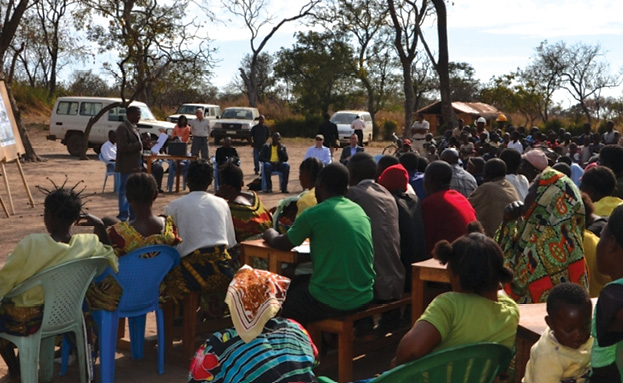In my mine(d): social engagement prioritized in new tailings standard

It’s probably not by chance that the first principle of the Global Industry Standard on Tailings Management (GISTM) is to “respect the rights of project-affected people” and to “meaningfully engage them at all phases of the tailings facility lifecycle”. This social focus reflects not only the potential vulnerability of communities close to tailings storage facilities (TSFs), but also aligns with the broader trend to integrate environmental, social and governance (ESG) factors into tailings management.
While social engagement with project-affected people is a well-established practice in various permitting, licencing and authorization processes, the GISTM requires engagement that endures for the operational life of the tailings facility and into closure – which in turn implies the need for a social engagement plan for the lifetime of the mine and beyond. Such engagement should extend to all stakeholders, including regulators, local government, traditional authorities, landowners, community-based organizations, local communities and the broader public.
This engagement needs to form part of the mine’s environmental and social management system (ESMS), which the GISTM in turn requires to be incorporated into – or to at least inform – the tailings management system (TMS). This presents one of the initial transitions that mining operations will have to make to comply with the GISTM and to ensure that on-site responsibilities are aligned, collaboration is fostered and the two sub-systems of an ESMS – the social and the environmental – are integrated with engineering aspects on site.
Integration of engineering, socio-economic and environmental aspects will require the coalescence of data and skills sharing between these spheres. In this way engineers will be better equipped to understand and anticipate socio-economic risks, and to disseminate information in a stakeholder-friendly format, to build trust and respect between mine operations and stakeholders.

One underlying concern that is key to TSF-related social engagement is the potential for, and implications of, catastrophic failure. It is critical for mining operations to understand community dynamics in order to prepare effective emergency response and recovery plans for these eventualities. This is just one example which social engagement can address. Others include the identification of risk factors, planning for spatial or economic displacement, social vulnerability, resettlement and compensation, and livelihood restoration.
Aligning with GISTM requirements will include ongoing surveillance programs that identify changes in social systems and valuable ecosystem services to communities. As part of impact identification and mitigation, there is also a need to establish direct mechanisms for stakeholders to share their unique knowledge and understanding of the area. Social engagement related to TSF management needs to build trust and stakeholder capacity, demonstrating a respect for human rights that informs management decisions throughout the TSF lifecycle.
Vassie Maharaj is director, partner and principal consultant in social risk management and stakeholder engagement; Franciska Lake is partner and principal environmental scientist; and Matthew Law is principal environmental and resource economics consultant at SRK Consulting.
2 Comments
Kevin Niebergall
I am interested in having a conversation with the presenters. How can I reach them? Thanks in advance, Kevin Niebergall – CGIS Industry Leader – Mining, Pulp & Paper Canada
Marilyn Scales
The authors are employed by SRK Consulting in Johannesburg, South Africa. Please check the company’s webpage.